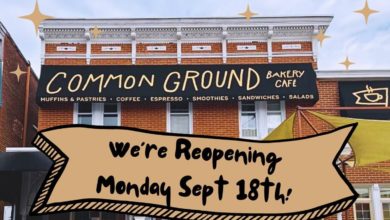The housing boom, which had set records for five years straight, has definitively been replaced by a housing recession. This is already having a severe impact on the U.S. economy overall and is hitting the most vulnerable sectors of the working class hardest.
Home prices have slipped, sales are down 12.7 percent from 2005, and construction of new houses and apartments was 27.4 percent lower in October 2006 compared to the year before. Contrary to previous reports, this general trend is now expected to continue and in fact deepen in 2007.
 Banks are foreclosing on working peoples� mortgages at record rates. Photo: Bill Hackwell |
A panel from the National Association for Business Economics projected that all housing construction would have fallen by 3.5 percent in 2006, according to the Nov. 20 International Herald Tribune. The panel predicted an even larger 5.5 percent drop-off in 2007.
The housing sector plays a significant role in the health of the economy overall. In light of the grim housing forecast, the NABE projected the gross domestic product to grow only 2.5 percent in 2007. The GDP grew 3.9 percent in 2004 and 3.2 percent in 2005.
The NABE report projects that unemployment, which sat at 4.4 percent in October, will rise on average to 4.9 percent in 2007. Merrill Lynch estimates that it could rise to as high as 5.8 percent by the end of the year. These are figures that have an immediate impact on the lives of poor and working people. It means 2 million more people�on top of the 6.7 million presently unemployed�will have to suffer the anxieties and insecurities of joblessness.
As with all economic downturns, the housing recession has hit working-class homeowners first and hardest.
Foreclosing on the most vulnerable
On Nov. 20, James J. Saccacio, chief executive officer of RealtyTrac, told the UPI, �So far this year, more than 1 million properties have entered some stage of foreclosure nationwide, up 27 percent from the same time last year.� In October, one of out of every 1,001 households was in the process of foreclosure�42 percent higher than in 2005.
This nationwide phenomenon is hitting hard in low-income neighborhoods, and particularly in Black or Latino communities. A Nov. 25 Montreal Gazette feature on the housing recession in the United States reported that in the city of Boston defaults on mortgages are up 79 percent. The article quotes real estate analyst John Anderson as saying that �virtually all� the increases come from the Black and Latino neighborhoods. Anderson went on to compare this new foreclosure �epidemic� to the urban blight caused by crack-cocaine in the 1970s and 1980s.
In Colorado, the state with the highest foreclosure rate, a similar scene is unfolding. In northeast Denver, over one in ten households have lost their homes in the last three years. Particularly hard hit has been Montbello, a longstanding diverse working-class Denver community with a Black and Latino majority. There, the median house sale price�for the lucky few that are successfully sold�is $164,950. The number of students who receive free or reduced-price lunches has nearly doubled to 57 percent, and food banks at local churches have reported serving record and ever-increasing numbers.
Many of the Montbello households suffering foreclosures had no previous assets and, therefore, took �100 percent� loans, which required no down payment. The Montbello experience is symptomatic of the predatory lending environment that pervades Black and Latino communities, where many borrowers are first-time homeowners.
Real estate businesses have paid special attention to undocumented immigrants, who are typically big savers but lack the financial experience and legal recourse to take on predatory lenders. According to the National Association of Hispanic Real Estate Professionals, home sales to undocumented immigrants alone could amount to as much as $60 billion nationwide.
Interest rates come back with a vengeance
The housing boom was above all facilitated by low interest rates. It allowed increasing numbers of working people to purchase homes. Home ownership has always been billed as the ticket into the �middle class.�
Every year, however, prices went up and out of reach for people with modest incomes. The banks and real estate companies were able to convince millions of families that their home was a wise investment�one that would continue to appreciate in value.
As a way of making homes immediately affordable, they offered adjustable-rate and interest-only mortgages to avoid high up-front costs, including the principle, for the first several years. According to a Nov. 1 Associated Press poll, around 22 percent of homeowners nationwide have these adjustable rate mortgages.
For the families who entered into these types of financial agreements during the housing boom, their monthly payments have gone up as a result of sharply higher interest rates.
Strapped for money, many homeowners borrow against whatever equity they have in their homes�this is commonly called taking a �second mortgage.� Or, if they can, they refinance their mortgages by replacing a high-interest loan with a lower-interest loan. These refinancing schemes allow homeowners to generate additional cash for living costs�like college expenses or medical needs. But they sink deeper into debt, and often squeeze all the remaining equity out of their homes�their only real asset.
Meanwhile, for people with insufficient credit to secure loans from the major banks, sub-prime lenders advertised quick and easy loan approvals on infomercials and billboards. Last year, one-fifth of all mortgages were financed with sub-prime loans. These loans often come with hidden fees and high long-term interest rates. They, too, allow a few years of lesser payments, before the interest rates start to really kick in.
Other homeowners simply decide to sell their homes to find something more affordable. Elderly people in particular often sell their homes in order to move into a smaller abode, using the net proceeds as their own private social security to allow them to retire.
With the number of unsold homes at record levels, the present housing market offers little relief. Fewer working-class families will be able to escape financial woes by selling their homes, and fewer seniors�after a lifetime of work�will be able to retire in the comfort they deserve. Instead of ensuring the security of �middle America,� home ownership ends up with all the same financial vulnerabilities�just repackaged.
Whether the housing crisis ends up in full-scale recession or the �soft landing� as some economists anticipate, the potential for financial disaster is now a reality for millions of homeowners.





